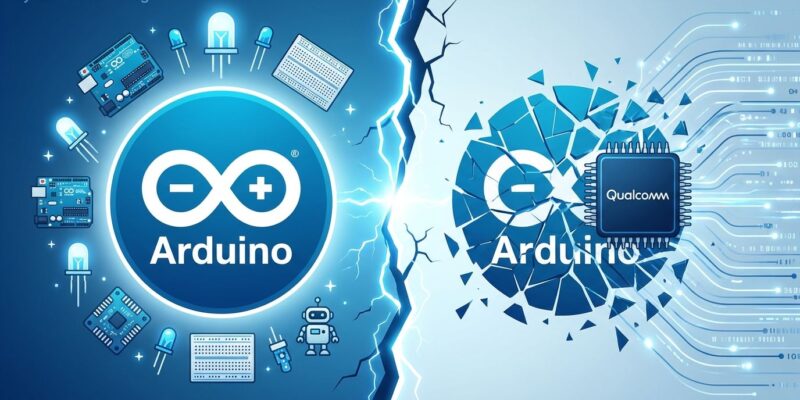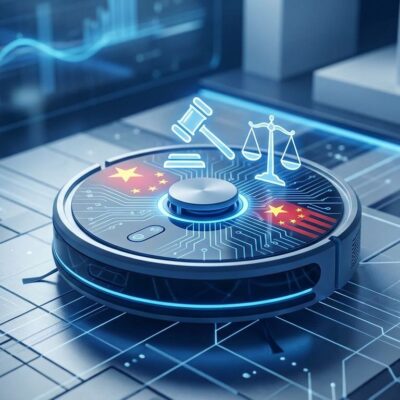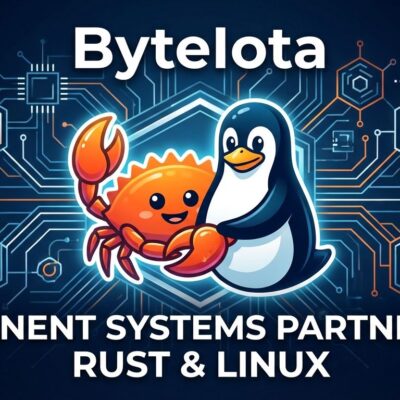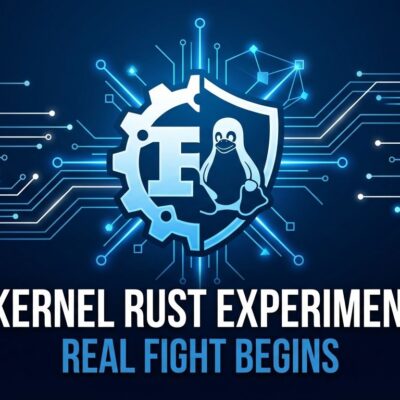
Just one month after Qualcomm acquired Arduino in October 2025, the chip maker quietly rewrote the platform’s terms of service on November 21—and the maker community erupted. The new TOS introduces an irrevocable, perpetual license over anything users upload, including code, projects, and forum posts. Additionally, it mandates broad AI monitoring with no data retention limits, bars users from identifying potential patent infringement, and integrates all user data—including from minors—into Qualcomm’s global ecosystem. Adafruit, the moral authority of open-source hardware, asked the blunt question: “Did Qualcomm kill Arduino for good?”
Arduino is the backbone of the maker movement with millions of users worldwide. For 20 years, it’s been synonymous with accessible electronics education and open-source hardware. However, these TOS changes reveal Qualcomm’s data and IP priorities are fundamentally incompatible with the open-source ethos that built Arduino. This follows the familiar pattern of MySQL→Oracle and GitHub→Microsoft, but the speed—just 30 days post-acquisition—and severity of changes suggest Arduino won’t recover community trust.
What Changed in Arduino’s Terms of Service
The updated TOS grants Arduino a perpetual, irrevocable, worldwide, royalty-free, sublicensable license over anything users upload. This includes code, board designs, forum posts, and comments. Critically, this license survives account deletion, meaning even if you leave Arduino, they retain rights to use, modify, and sublicense your work to third parties indefinitely.
Additional changes include AI monitoring described as “surveillance-style” with vague data collection policies and no clarity on retention periods. Moreover, a patent shield clause bars users from identifying IP infringement by Arduino or its partners. User data can be retained for up to five years even after account deletion, with all data—including from minors—flowing into Qualcomm’s global ecosystem.
Arduino claims these changes enable cloud services and collaboration tools. However, the language grants them unlimited rights with no opt-out. For 20 years, Arduino users trusted the platform with their creative work because of its open-source principles. Consequently, these TOS changes fundamentally break that trust. Users who uploaded projects before the acquisition now find their work under Qualcomm’s perpetual license retroactively—there’s no grandfathering clause. Furthermore, educational institutions that used Arduino Cloud for student projects now have those projects integrated into Qualcomm’s data infrastructure, raising serious privacy concerns.
The Maker Community Responds: “Arduino is Dead”
Adafruit Industries, the leading open-source hardware company and moral authority in the maker space, led the backlash with a scathing LinkedIn post asking “Did Qualcomm kill Arduino for good?” Philip Torrone, Adafruit’s co-founder, stated bluntly: “Arduino was built by the community, and Qualcomm/Arduino have never really liked what the community created.”
Individual developers echoed the sentiment, with many announcing immediate migration to alternatives. Venky Raju, CTO at ColorTokens, wrote: “It was great knowing you Arduino, RIP. Hello, RP2040 and ESP32, hope we have a great future ahead.” Additionally, Frank DeLaTorre, a board design engineer, put it even more directly: “QCOMM does not understand anything about the Maker space. They are a greedy corporation that doesn’t give a crap about the community that Arduino has built over the past 10+ years.”
Adafruit isn’t a competitor trying to gain advantage—they’re the conscience of open-source hardware. When they sound the alarm, it’s about principle, not profit. Their critique carries immense weight because they’ve proven you can build a successful business on open principles. Therefore, when Adafruit says Arduino is dead, the community listens. The immediate pivot to alternatives shows this isn’t idle complaining—makers are actively migrating.
This Isn’t the First Time: The Pattern of Corporate Capture
Arduino’s fate follows a well-worn pattern of corporate acquisitions killing open-source culture. When Oracle acquired Sun Microsystems and inherited MySQL in 2010, the open-source community was horrified. MySQL’s ecosystem slowly declined under Oracle’s leadership, leading to the MariaDB fork and mass migration to PostgreSQL.
Microsoft’s 2018 GitHub acquisition for $7.5 billion drew similar backlash. However, GitHub has fared better by operating independently and installing credible open-source leadership. In contrast, Arduino’s trajectory looks more like MySQL than GitHub. The TOS changes came within 30 days—much faster than past acquisitions. No credible open-source leader was installed, and Qualcomm’s business model fundamentally conflicts with maker values.
The pattern reveals itself in speed and severity. MySQL→Oracle led to gradual decline over years. GitHub→Microsoft generated skepticism but cautious acceptance. Conversely, Arduino→Qualcomm triggered an aggressive TOS rewrite in 30 days and immediate community exodus. The speed suggests Qualcomm isn’t interested in preserving community trust—they’re integrating Arduino into their corporate data and IP infrastructure immediately. This is corporate capture, not partnership.
Arduino Is Dead. Long Live ESP32 and Raspberry Pi Pico
Unlike past open-source controversies, Arduino users have mature, battle-tested alternatives ready for migration. The ESP32 from Espressif offers built-in Wi-Fi and Bluetooth, a 240MHz clock speed, 520KB SRAM, and Arduino IDE compatibility at $5-15. Similarly, the Raspberry Pi Pico and Pico W provide RP2040 dual-core performance, MicroPython support, and ultra-affordability at $4-6. Both have large communities and extensive tutorials.
Previous controversies like MySQL and GitHub left users without clear alternatives, creating lock-in. However, Arduino users face no such constraint. ESP32 and Pico are proven, affordable, and Arduino-compatible. This makes community exodus viable, not theoretical. Makers are voting with their feet because they can.
Arduino published a defensive blog post on November 21 titled “Setting the record straight,” claiming “anything that was open, stays open” and emphasizing that open-source hardware and software licensing remains unchanged. They frame TOS changes as “clarity, compliance, and supporting innovation” while stating “we have been open-source long before it was fashionable.” Nonetheless, the defense misses the point. Arduino’s open-source commitments apply to hardware and software licenses, not to how they can use uploaded user content, monitor activity, and integrate data with Qualcomm.
The defensive tone and failure to address specific concerns—perpetual license, AI monitoring scope, patent shield—reinforces community suspicions that Qualcomm doesn’t understand or respect maker culture. When your defense makes things worse, you’ve lost the narrative.
The Takeaway: Migrate Before More Work Falls Under Qualcomm’s License
Arduino as we knew it is dead. The TOS changes aren’t a mistake—they’re Qualcomm’s operating model. The maker community is right to be furious and right to migrate. This is corporate capture of open-source infrastructure, and it won’t get better.
If you’re using Arduino Cloud, migrate now before more content falls under the new TOS. ESP32 and Raspberry Pi Pico are ready, affordable, and Arduino-compatible. Indeed, the maker community has learned this lesson before with MySQL and GitHub. This time, they have viable alternatives and are taking action immediately.
The broader lesson: Open-source projects need better governance protections against corporate capture. Community contributions enrich projects, making them acquisition targets. Post-acquisition, corporate priorities inevitably conflict with community values. Until open-source ecosystems develop stronger defensive structures—community ownership trusts, governance foundations, irrevocable commitments—this pattern will repeat.











